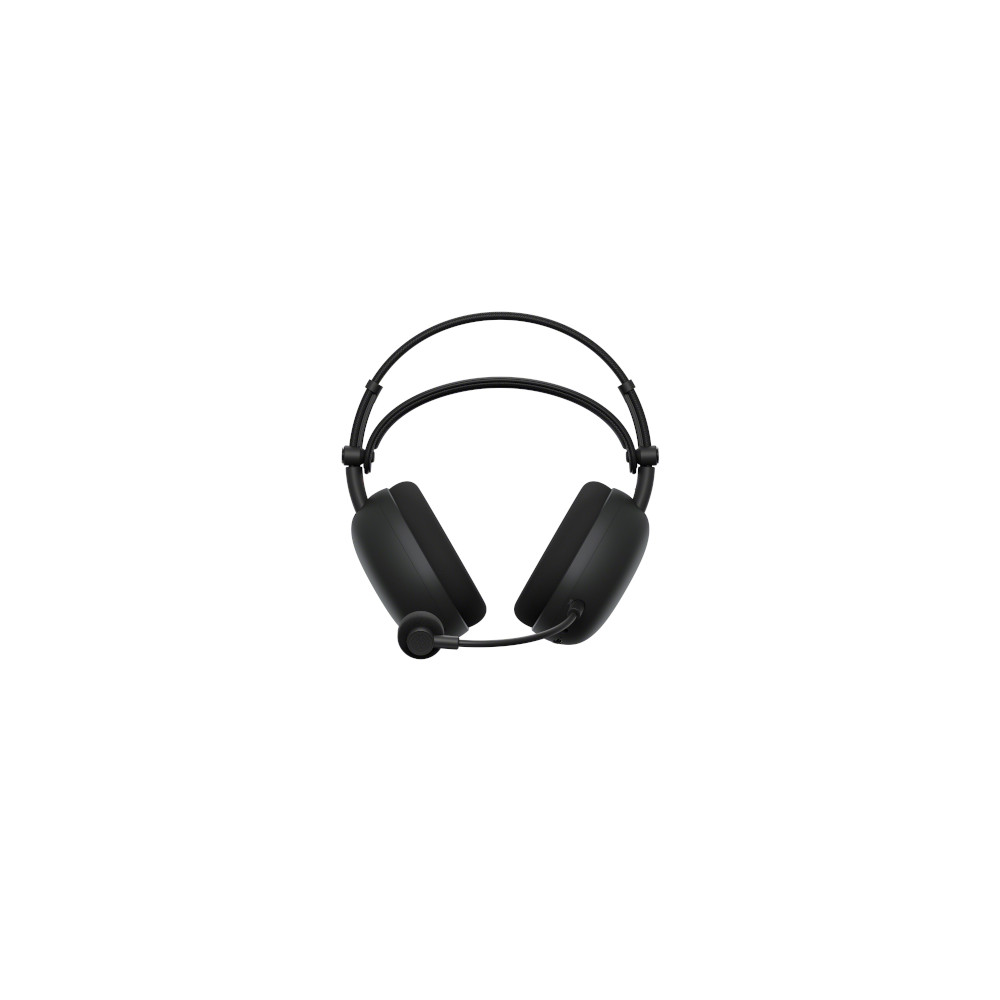All products featured are independently chosen by us. However, SoundGuys may receive a commission on orders placed through its retail links. See our ethics statement.

Sony INZONE H9 II review: Not quite XM6 sound in a gaming headset
September 23, 2025
Sony Inzone H9 II Gaming Headset
Weight: 260g
Sony has made gaming earbuds and headsets for a while. This includes the Pulse series for PlayStation and the INZONE lineup for PC and other consoles. The latest INZONE H9 II is the premium choice, and it comes at a high price. It offers all the features you expect from a top-end gaming headset. It also has some audio perks that might attract audiophiles, like the same drivers found in Sony’s flagship WH-1000XM6 headphones. But does this headset really deliver the same great sound?
I spent a week testing the INZONE H9 II to see if it truly upgrades the original model from nearly three years ago.
- This article was updated on September 23, 2025, to add the MDAQS results to the sound quality section.
The Sony INZONE H9 II is best suited for FPS gamers who prioritize comfort and premium features. If you want effective noise cancelation and an extremely lightweight headset for marathon gaming sessions, and you’re willing to pay $350, the H9 II delivers. However, the battery life is only decent, and you will need to tweak the EQ for other game genres and general music listening. If you’re budget-conscious or want better overall sound quality for your money, there are better options available.
What’s it like to use the Sony INZONE H9 II?
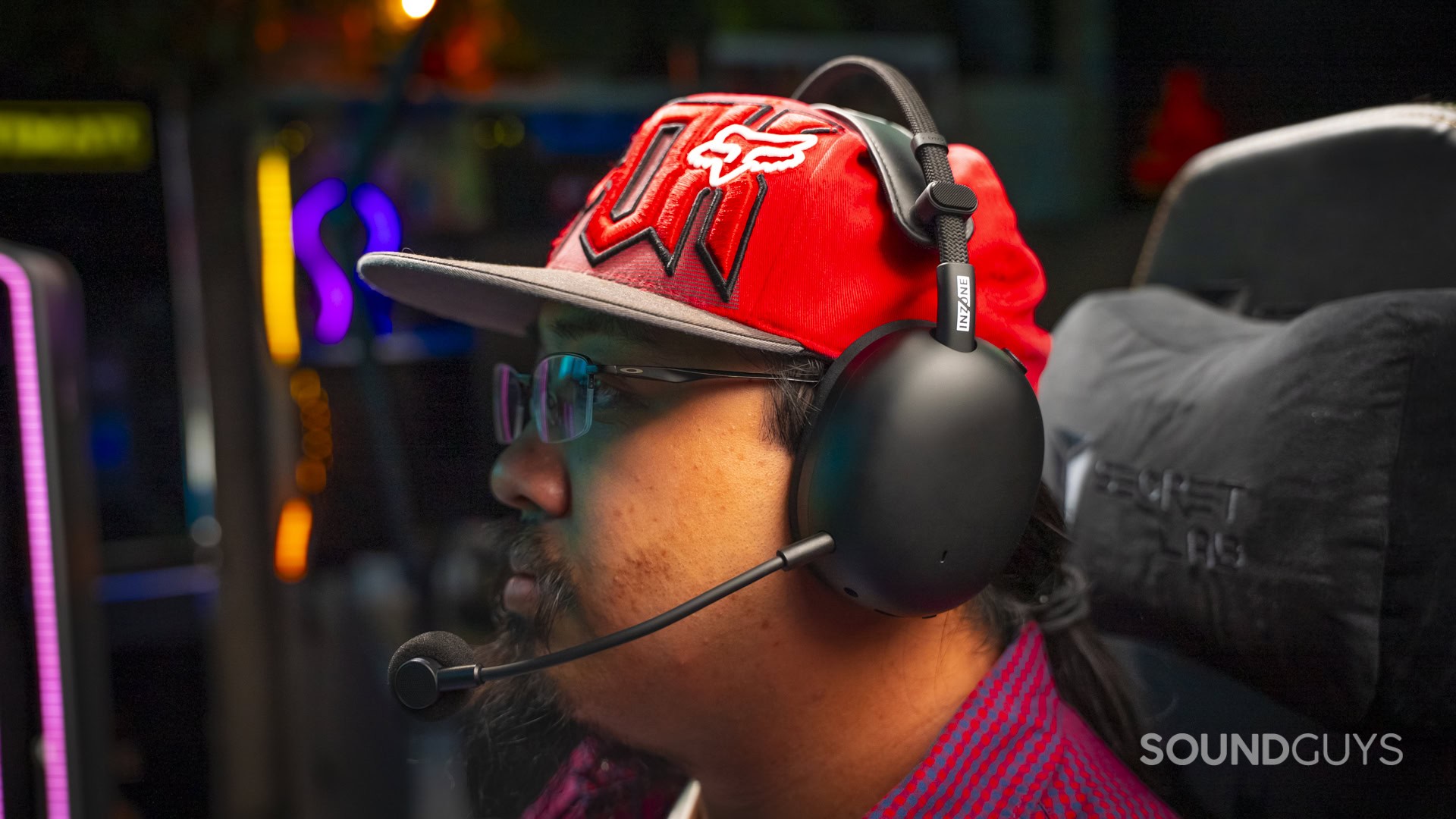
The INZONE H9 II is essentially an adaptation of Sony’s flagship WH-1000XM6 headphones built for a gaming audience, and it even has a few design improvements. For instance, they have large, rounded earcups that, while being the same width as the XM6, have more generous padding to provide more depth. In other words, my ears weren’t smooshed up against the inside walls, and I didn’t have to worry about the pesky ANC mic poking my ears. The material is also more breathable to prevent heat build-up. It is a mesh fabric with a pleather inner lining, making it comfortable for long sessions. The earpads are also replaceable should you wear them out over time.
While handling and wearing the headset, I was immediately struck by how lightweight it felt. The H9 II is 57g lighter than the first INZONE H9, and they redesigned its headband for better weight distribution. A thin steel frame is wrapped in braided fabric. Underneath, there’s an adjustable padded leatherette cushion. It rests comfortably on your head. It uses spring hinges similar to the WH-1000XM6, plus a slider-lock mechanism to adjust and secure the fit. It can be hard to make incremental adjustments while wearing the headset, as the tension from the springs will release when you press either button. The headset also doesn’t have a strong clamping force, and the earcups shifted in place while I was moving.
The earcups on the headphones can fully rotate to lie flat in both directions, which I don’t often see in headphones. But they can’t fold up like the WH-1000XM6 to be compact. Still, the headset is portable, so you can take it with you. Sony provides a soft pouch case with a water-resistant exterior and a velvet interior. It also has a separate zippered pouch for cables.
How do you control the Sony INZONE H9 II?
Using the headset is easy. The INZONE H9 II has buttons along the back edges of the headphones. On the right side, you’ll find buttons for game/chat balance, a power button you can hold to turn the headphones on or off, or press to have a voice read out the remaining battery life. There’s also a Bluetooth pairing button.
On the left side, there’s a button to switch between active noise canceling, ambient sound mode, and regular mode. You’ll also find a volume dial, a USB-C charging port, and a headphone jack. The microphone is detachable, and there’s a large mic mute button on the top of the left earcup. This button activates an LED mute indicator at the end of the boom mic.
It took me a while to know which setting I was using. Instead of voice cues, the H9 II uses different audio chimes for Bluetooth and ANC modes, which can be hard to tell apart.
Should you use the Sony INZONE Hub and Sony Sound Connect app?
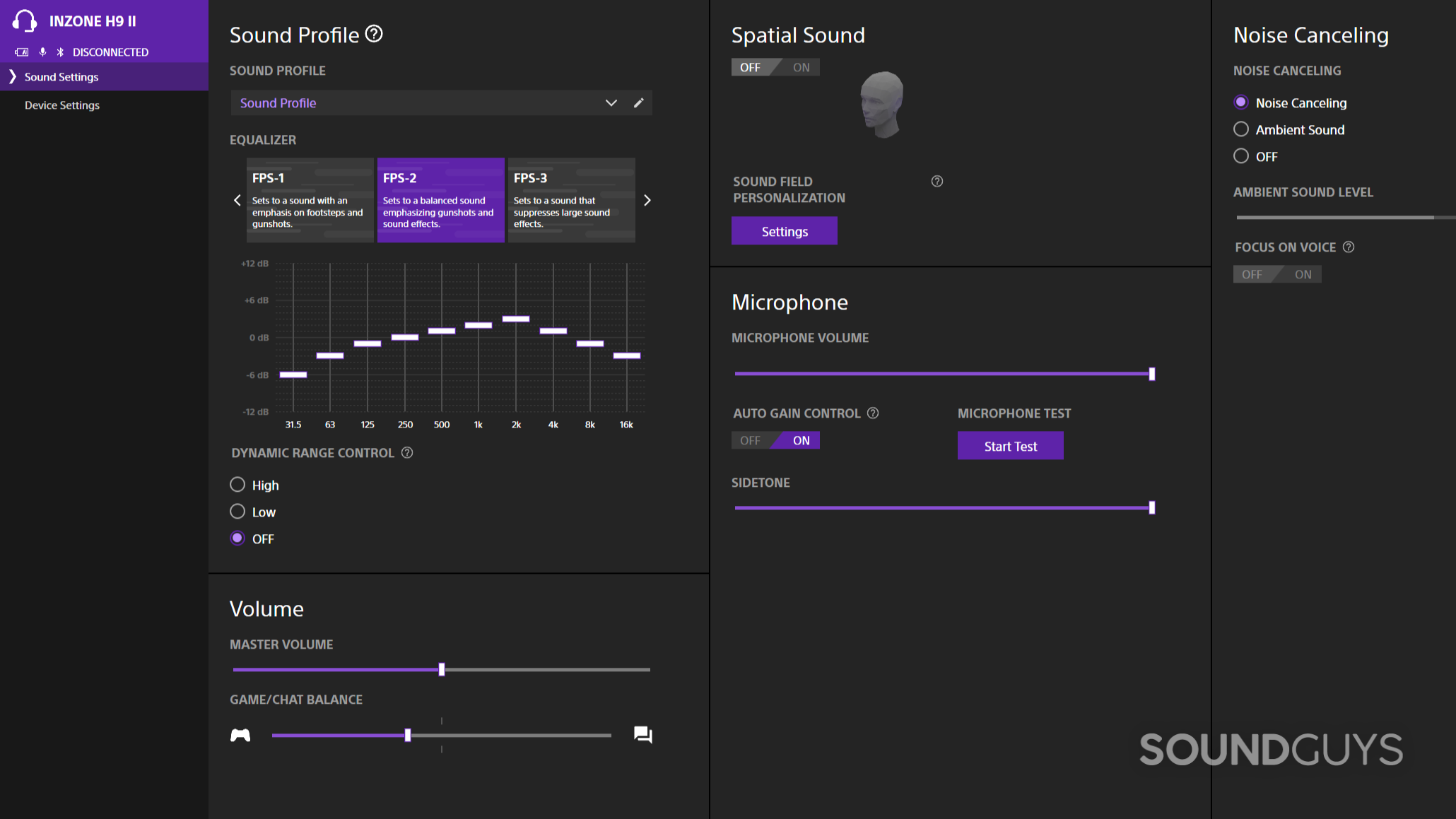
Sony offers a desktop companion app for using its INZONE peripherals on a PC, including the H9 II headset. INZONE Hub is a fairly simple desktop app. Its main advantage is letting users choose from EQ presets. This includes FPS-specific options made with FNATIC. You can also create a custom EQ with the 10-band sliders.
Aside from offering a visual way to control the headset, the INZONE Hub also adds a spatial sound feature. It allows you to take a picture of your ears and upload it to Sony’s servers, and it generates a custom HRTF profile for personally tailored spatial audio.
The H9 II headset is compatible with the Sony Sound Connect App on mobile devices. It has all the same functions as the INZONE Hub on PC, but the main benefit of using the mobile app is that you can save your EQ presets to the headset itself. This allows you to apply your EQ settings to game audio on PlayStation or Nintendo Switch consoles. Conversely, pairing the H9 II to PC with the INZONE Hub software will overwrite your EQ settings.
How do you connect the Sony INZONE H9 II?
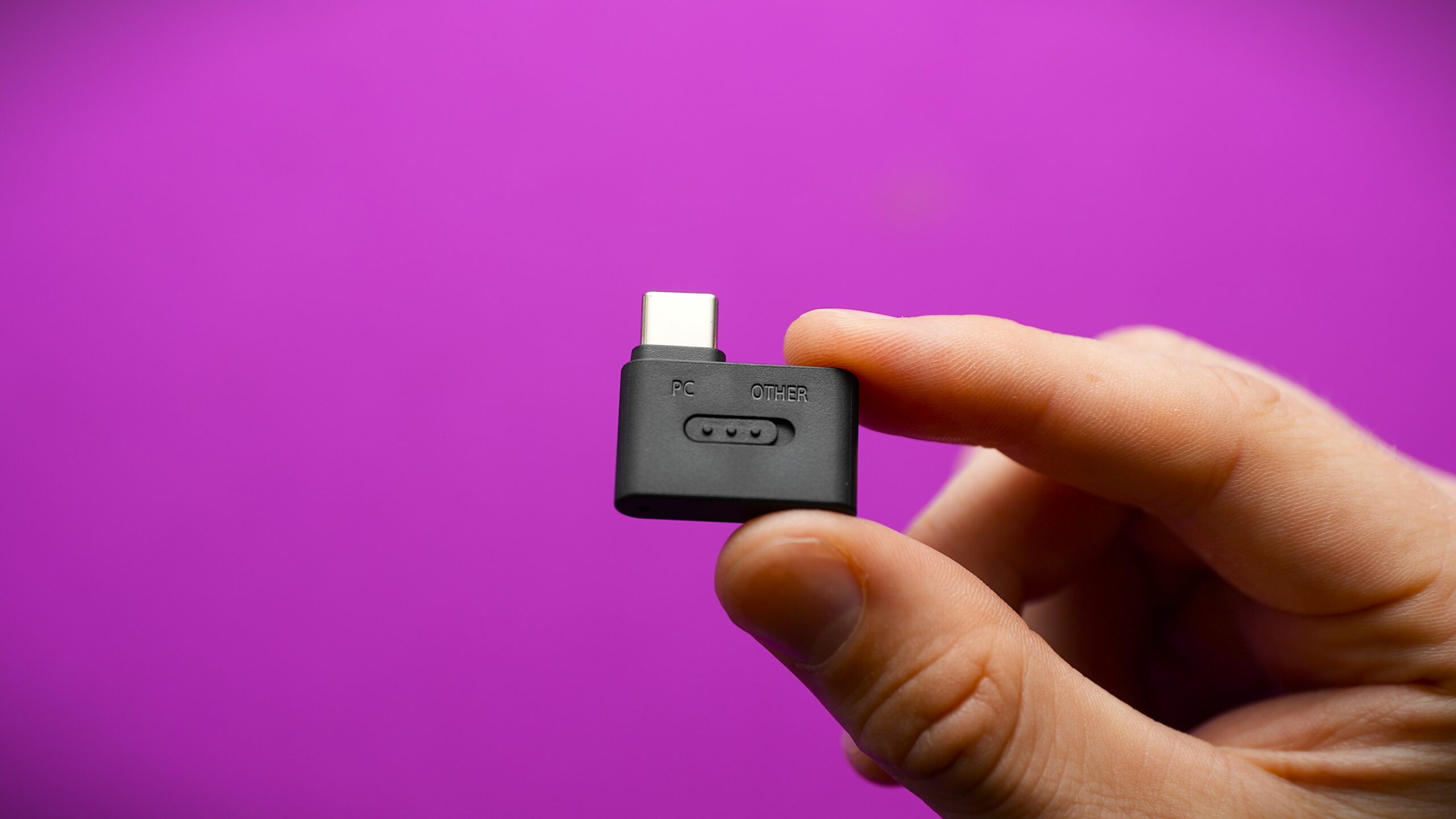
You can connect the Sony INZONE H9 II in several ways. The main method is the included 2.4GHz dongle. This connects to a PC, PlayStation, and Nintendo Switch (when docked) for lag-free wireless audio.
The H9 II also supports Bluetooth. It uses the default SBC and AAC codecs. Bluetooth 5.3 offers LE Audio, which means longer battery life and better sound with the LC3 codec. It also supports features like multi-device and broadcast streaming via Auracast. While there’s no multipoint, you can connect via Bluetooth with LE Audio and the USB dongle simultaneously, allowing audio from both sources.
Lastly, the H9 II introduces a wired 3.5mm connection with an included audio cable. This feature is great for connecting to handheld systems or console controllers, which the original H9 did not have.
To pair the H9 II headset via Bluetooth, press and hold the Bluetooth button to put it in pairing mode. Then, select the INZONE H9 II from the list of available devices.
How long does the Sony INZONE H9 II’s battery last?
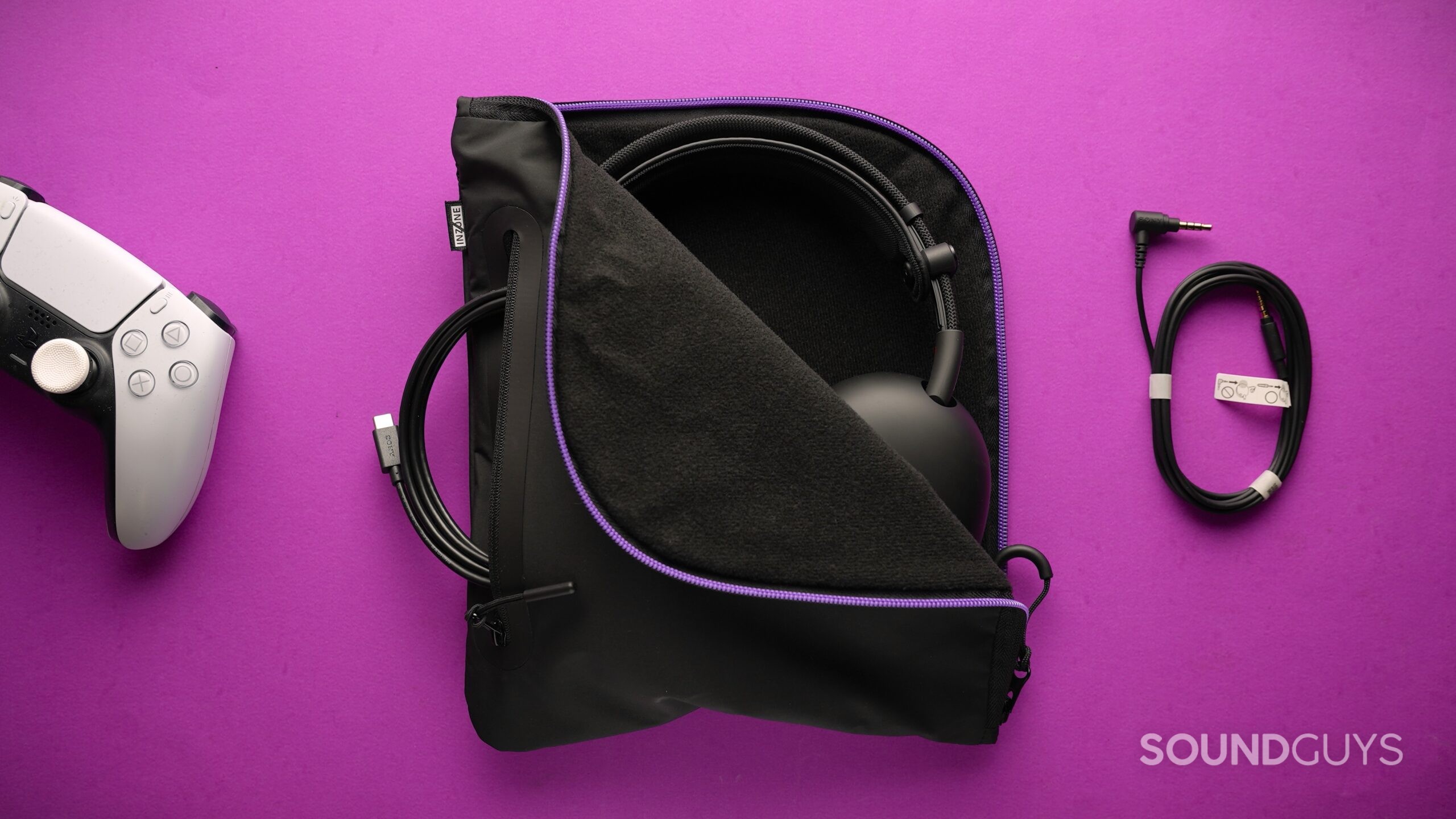
Sony claims the INZONE H9 has 30 hours of battery life. However, in our testing, the headset lasted 48 hours and 32 minutes with ANC off, playing music at 75dB(SPL). If you listen at higher volumes, use ANC, or connect via Bluetooth and 2.4GHz simultaneously, battery life will decrease faster.
Two full days are enough for several gaming sessions, but some cheaper headsets last longer. For example, the Razer BlackShark V3 Pro offers up to 70 hours, while the HyperX Cloud Alpha lasts over 300 hours.
The INZONE H9 charges via USB-C. With quick charging, just five minutes of charging gives you three hours of audio, which is handy for quick top-ups. However, it lacks USB audio, so you can’t play while charging.
How well does the Sony INZONE H9 II attenuate noise?
Loading chart ...
The Sony INZONE H9 joins a growing group of high-end gaming headsets sporting active noise canceling, and it offers pretty good performance. There is a good amount of attenuation in the sub and upper-bass range, meaning rumbling and droning sounds are effectively quieted. The passive isolation performance is also pretty good, reducing the perceived loudness of outside noise by about 80% with ANC on.
During my usage, I wasn’t able to hear what my colleagues were saying, even though they were speaking just a few feet away. But I could hear a low murmur that they were talking. However, the AC unit directly overhead on my PC was completely silent.
The H9 II doesn’t exactly have a full-on transparency mode like the WH-1000XM6 headphones. What it does offer is an ambient mode that lets in more outside noise. It’s not smart enough to listen for voices specifically. I did notice a difference between it and just turning ANC off, with the general hum of environmental noise sounding louder. Still, if someone approached me to have a conversation, it was not really feasible to use this mode, and removing the headset was much easier.
How do the Sony INZONE H9 II sound?

While the Sony INZONE H9 II shares the same 30mm drivers as the WH-1000XM6 headphones, they have very different tuning. Sony developed this gaming headset with the FNATIC Valorant and Apex eSports teams, and they tuned it specifically to highlight sounds that professional FPS players look for in gameplay. Given that, you will want to mess with the custom equalizer for anything outside of that use case, like general music listening.
Multi-Dimensional Audio Quality Scores (MDAQS)
The chart below shows how the sound of the Sony INZONE H9 II was assessed by the Multi-Dimensional Audio Quality Score (MDAQS) algorithm from HEAD acoustics.
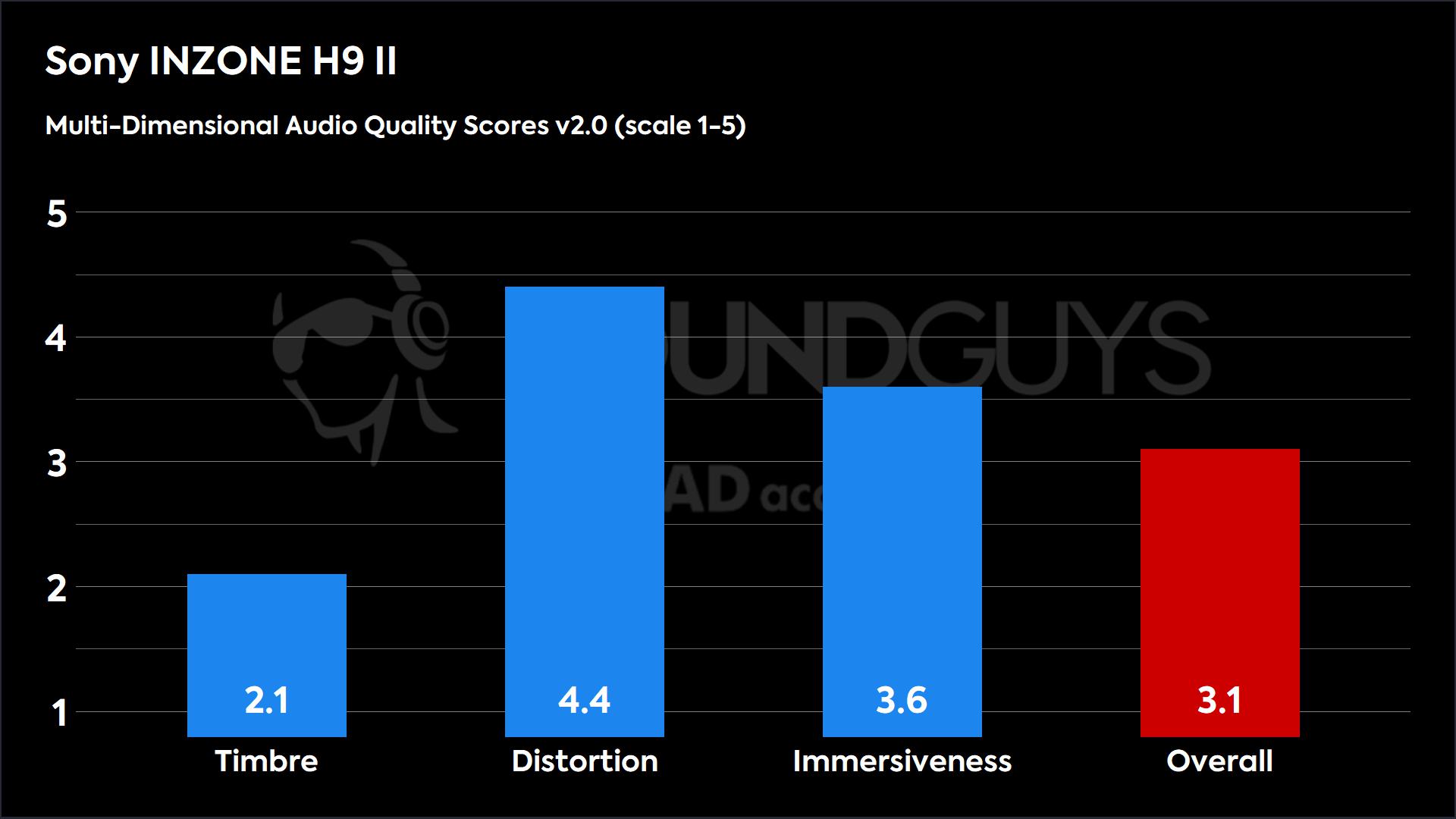
Our simulated panel of untrained listeners returned a low score for Timbre, low levels of distortion (as indicated by the high score), and an average score for immersiveness. Given that this headset is tuned specifically for gaming, it is unsurprising to see an unfaithful reproduction of the entire frequency spectrum. Even still, most people should find the overall sound just “okay.”
- Timbre (MOS-T) represents how faithfully the headset reproduces the frequency spectrum and temporal resolution (timing information).
- Distortion (MOS-D) represents non-linearities and added noise: higher scores mean cleaner reproduction.
- Immersiveness (MOS-I) represents perceived source width and positioning: how well virtual sound sources are defined in three-dimensional space.
See here for an explanation of MDAQS, how it works, and how it was developed.
Reviewer’s notes
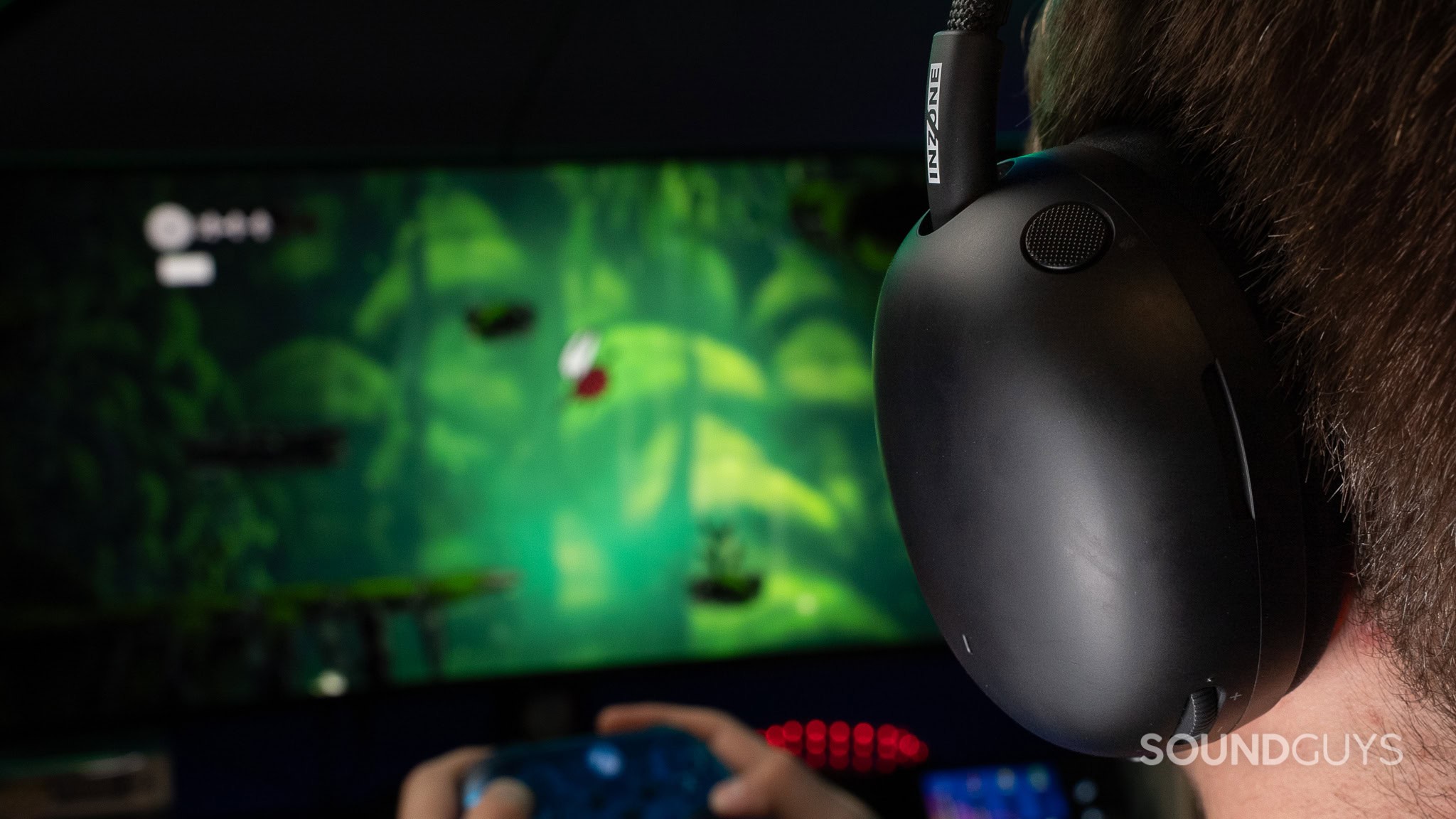
Editor’s note: this review uses a hover-enabled glossary to describe sound quality based on a consensus vocabulary. You can read about it here.
Objective Measurements
Loading chart ...
Well, you can tell right off the bat that this wasn’t tuned for music in mind. The frequency response of the Sony INZONE H9 II is very different than our house curve, especially in the important regions like the 3kHZ “ear gain” bump, with a significant dip just before 4kHz. Ear gain refers to the natural boost in this frequency range that occurs when sound enters your ear canal, and headphones typically must reproduce this emphasis to sound natural and present. The INZONE H9 II does not. Aside from that, sounds in the sub bass (20-60Hz) are underemphasized, so you won’t really feel that bass, but you will hear it with the boost at 100Hz.
Even though Sony incorporated aspects of the WH-1000 series of headphones here, the INZONE H9 II frequency response is very different from the default output of the Sony WH-1000XM6, which followed our house curve much more closely and delivered a more overall pleasing listening experience.
I think Sony went a little crazy with FPS-specific EQ profiles and forgot about, well, everything else. Aside from the FPS-leaning default tuning, the Inzone Hub offers three additional EQ profiles, each catered to a different variety of first-person shooters. The FPS-1 EQ is heavily V-shaped and does a slightly better job of highlighting footsteps, while FPS-2 raises the mid-range strength and will increase the sound effects of gunshots and explosions. FPS-3 has a pronounced bass boost at 250Hz followed by a steady roll-off into the high-mids and treble, which I found muffled most battle noise.
There are no EQ options for any other game types, such as RTS or RPG games. As someone who enjoys a single-player experience or kicking back with some cozy games, I wish Sony had spent time developing other game-specific options.
How good is the Sony INZONE H9 II’s microphone?
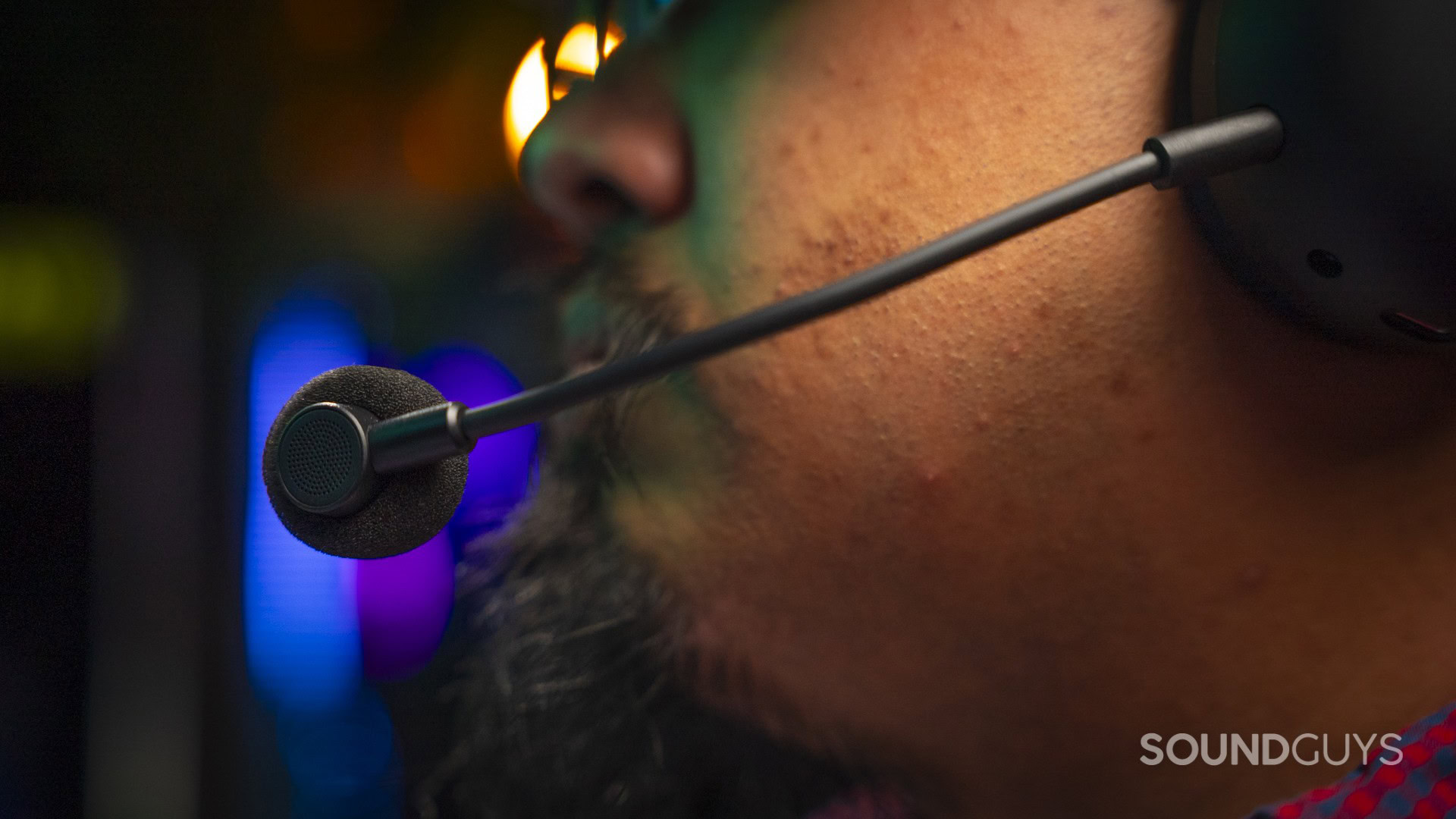
The H9 II replaces the previous H9’s plastic, flip-to-mute mic with a detachable, unidirectional design that zeroes in on your voice and cuts background noise, offering clearer communication than the old bidirectional setup. Its Super Wide Band (SWB) range has also been expanded from 50 Hz–7 kHz to 50 Hz–14 kHz, doubling the upper limit for a more natural and detailed vocal sound. Sure, it’s not as good as a dedicated podcasting microphone, but it’s much more reliable for work meetings than the mediocre mic in your AirPods. Have a listen for yourself:
Sony INZONE H9 II microphone demo (Ideal conditions):
Sony INZONE H9 II microphone demo (Office conditions):
Sony INZONE H9 II microphone demo (Reverberant space):
How does the microphone sound to you?
It’s worth mentioning that the headset’s default volume for sidetone is set quite low, and I had to adjust the strength to about 70-80% in the INZONE Hub app to hear myself clearly. Setting it any higher made my voice sound too robotic with sibilants, especially “s” sounds, which sounded a bit shrill.
Should you buy the Sony INZONE H9 II?
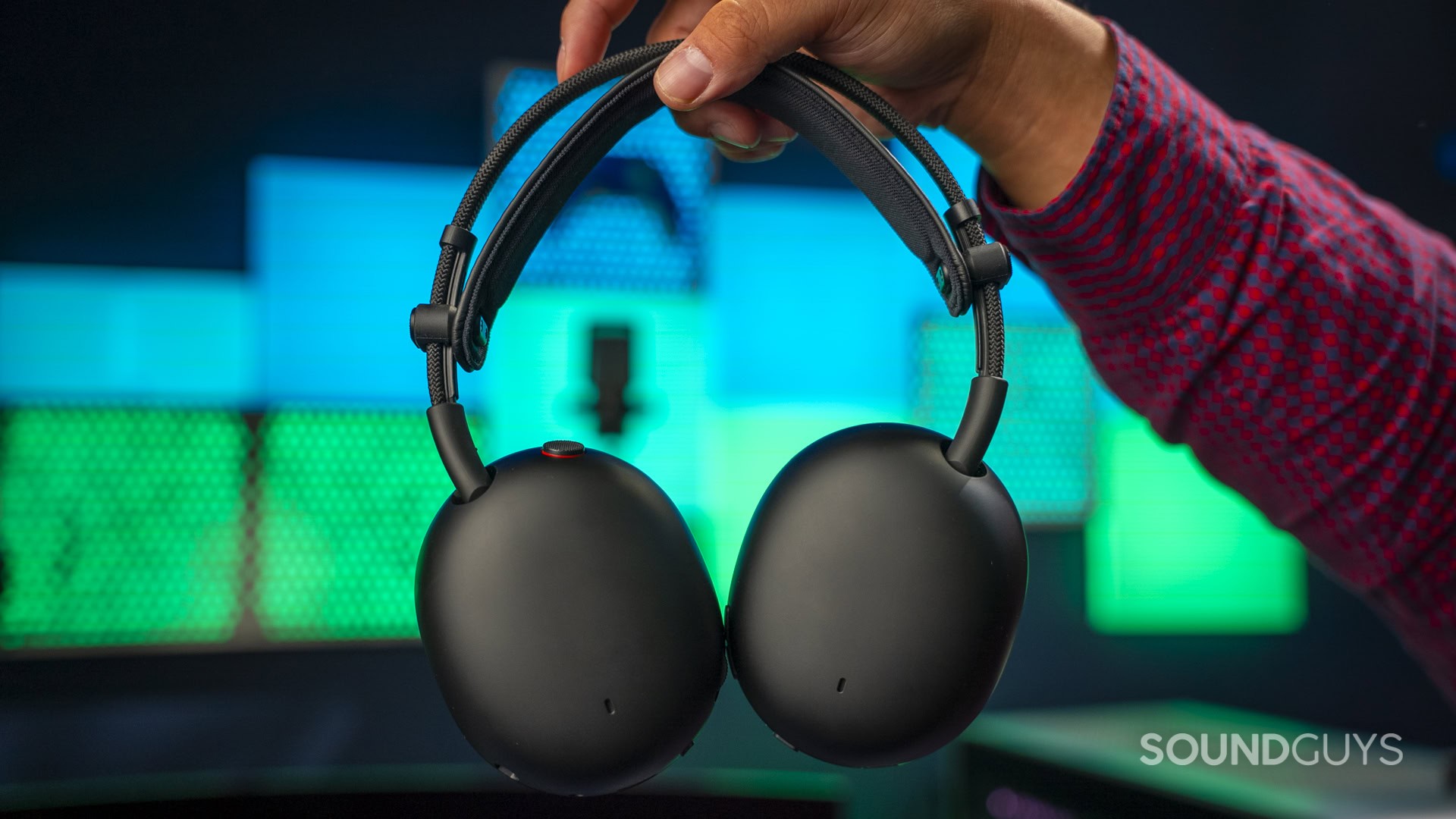
If you want a gaming headset with premium features for PCs and PlayStation consoles, the Sony INZONE H9 II is worth considering, especially for FPS games. However, if you want a headset that sounds good across all genres, this isn’t it. It’s a shame because Sony had an easy win lined up: just take the WH-1000XM6 and stick a detachable boom mic on it. While the ANC performance is in the same ballpark, the default tuning of the H9 II headset is far off-field. I hope Sony will work to fix that with a firmware update, but as it is now, it requires some tweaking with the custom equalizer, which can at least address most of the issues.
The battery life is decent, and it’s comfortable and lightweight for long sessions. Bluetooth LE connectivity and simultaneous audio output are nice features. Still, you can find better overall sound quality in other gaming headsets that don’t cost $350 USD. The INZONE H9 II is pricey for what it offers, and you can find most of these features in a gaming headset for much less today.
What should you get instead of the Sony INZONE H9 II?
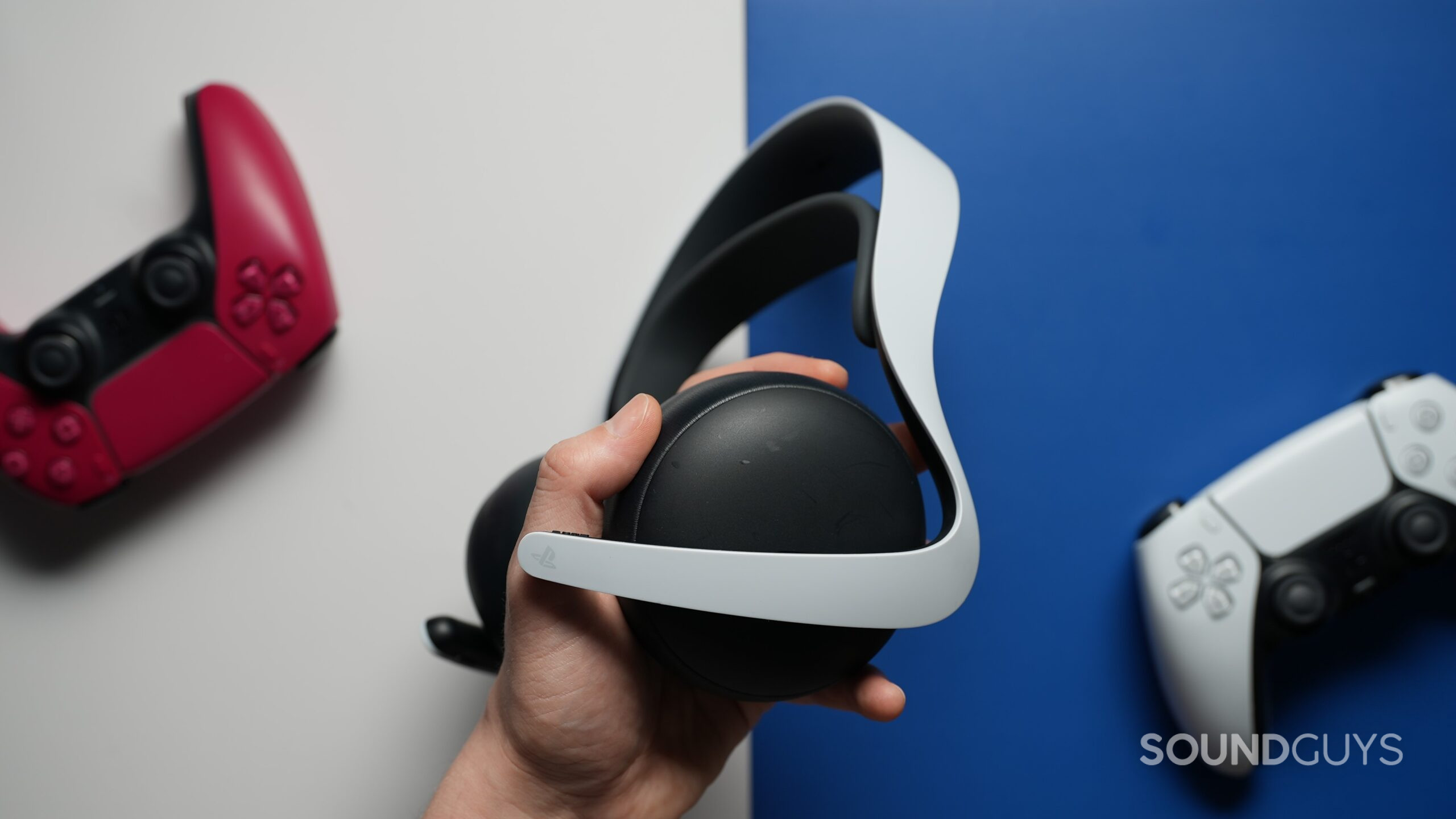
Here are three gaming headsets I would recommend as alternatives to the Sony INZONE H9 II:
- Alienware Pro Wireless ($229.99 at Amazon): The Alienware Pro achieves the highest MDAQS scores among gaming headsets we’ve tested, with excellent sound quality. It also has a 70+ hour battery life, but the earcups can’t rotate to lie flat like the H9 II can. Both offer effective ANC and premium build quality, but the Alienware Pro has a better seal and a more secure fit. The earcups are pleather, however, which may degrade quickly over time. There isn’t any dual-audio either; you must use Bluetooth or the 2.4gHz dongle independently. Still, for $120 less than the H9 II, the Alienware Pro is a better value for PC and PlayStation gamers.
- Razer BlackShark V3 Pro ($249.99 at Amazon): The BlackShark V3 Pro offers superior wireless latency at just 10ms, making it the better choice for competitive FPS players who demand the absolute fastest response times. You also get up to 70 hours of battery life. However, it suffers from treble distortion and fit issues with its yoke design that can compromise ANC effectiveness, while the H9 II is more comfortable for extended wear. While both have a default tuning suited for FPS gaming, each has a custom equalizer to better adjust the sound for general music listening. The BlackShark is also $100 less expensive.
- PlayStation Pulse Elite ($147.99 at Amazon): If you only game on PlayStation 5 and don’t need ANC, the Pulse Elite is much betetr value as it only costs half the price of the H9 II and offers planar magnetic drivers that provide pretty good sound quality and excellent battery life.
Thank you for being part of our community. Read our Comment Policy before posting.
